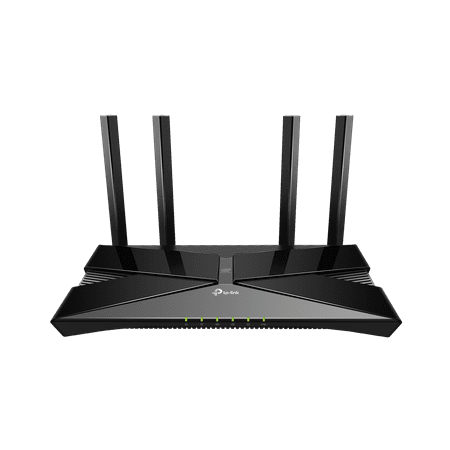TP-Link Archer AX3000 | 4 Stream Dual-Band Wi-Fi 6 Wireless Router | Up to 3 Gbps Speeds | No buffering for Online meetings
Wi-Fi 6 technology has redefined home WiFi. Experience up to 3x faster speeds, higher capacity, and reduced congestion overall compared to the previous AC Wi-Fi 5 standard. | The Archer AX3000 4-stream dual-band router reaches speeds of up to 3 Gbps, for a buffer-free 4K/HD streaming and gaming experience. | With more and more devices in your home, your current router will likely begin to slow down. The Archer AX3000 lets you connect even more devices via OFDMA technology, minimizing network congestion that occurs with too many connected devices. | Intel’s dual-core processor effortlessly handles all your streaming, gaming and smart home devices. | Archer AX3000 uses Beamforming technology to focus WiFi signal to your devices for more reliable coverage. | The Archer AX3000 works with all previous WiFi standards and all WiFi-enabled devices. Setup in minutes with Tether app.






Wi-Fi 6 Technology Featuring Intel: Wi-Fi 6 technology achieves up to 3x faster speeds, 4x capacity and 75% lower latency compared to the previous generation of Wi-Fi 5 while the power of Intel’s dual-core CPU ensures your experience is smooth and buffer-free.?Next-Gen 3 Gbps Speeds: Reaches incredible speeds up to 3 Gbps (2402 Mbps on 5 GHz band and 574 Mbps on 2.4 GHz band) for faster streaming and gaming like you have never experienced before.?Connect More Devices than Ever Before: Simultaneously communicate more data to more devices using revolutionary OFDMA and MU-MIMO technology.?Minimize Lag for All Devices and Applications: Experience ultra-smooth entertainment whether you are streaming 4K videos, gaming online, or even video chatting with up to 75% reduced lag.4?More Reliable Coverage: Achieve the strongest, most reliable WiFi coverage with Archer AX3000 as it focuses signal strength to your devices using Beamforming technology and four antennas. ?Increased Battery Life for Devices: Target Wake Time technology reduces your devices’ power consumption to extend their battery life.?Easy Setup: Set up your router in minutes with the powerful TP-Link Tether App?Backward Compatible: Archer AX3000 supports all previous 802.11 standards and all WiFi devices



Reviews
There are no reviews yet.